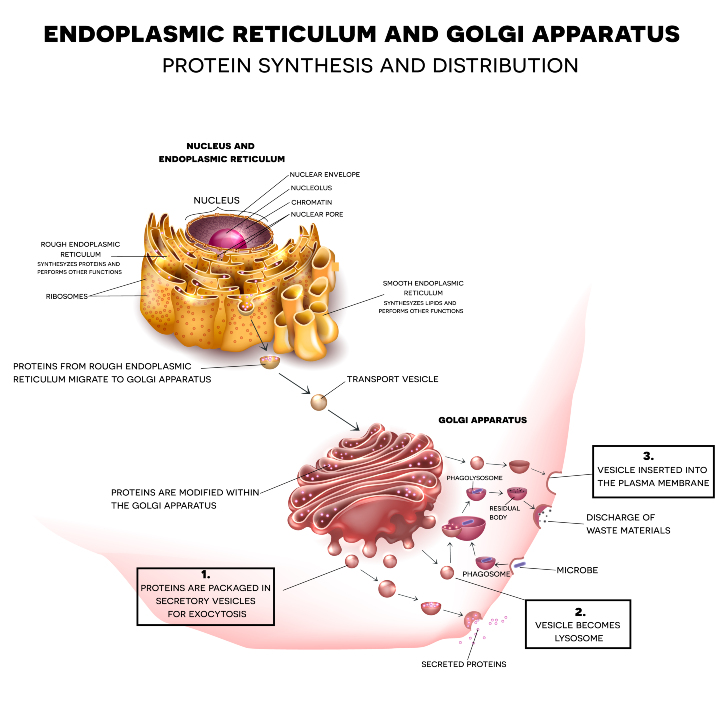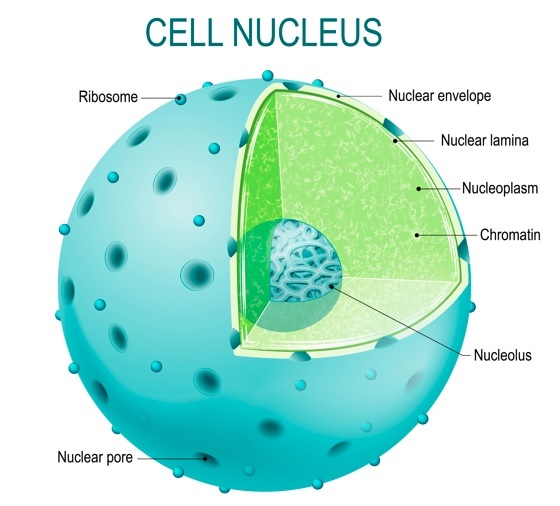
 Data Structure
Data Structure Networking
Networking RDBMS
RDBMS Operating System
Operating System Java
Java MS Excel
MS Excel iOS
iOS HTML
HTML CSS
CSS Android
Android Python
Python C Programming
C Programming C++
C++ C#
C# MongoDB
MongoDB MySQL
MySQL Javascript
Javascript PHP
PHPPhysics
Chemistry
Biology
Mathematics
English
Economics
Psychology
Social Studies
Fashion Studies
Legal Studies
- Selected Reading
- UPSC IAS Exams Notes
- Developer's Best Practices
- Questions and Answers
- Effective Resume Writing
- HR Interview Questions
- Computer Glossary
- Who is Who
Write The Functions Performed by The Following Cell Organelles: (a) Endoplasmic Reticulum (b) Golgi Complex (c) Nucleus (d) Chromoplasts (e) Vacuoles (f) Mitochondria
Introduction
The cell, the fundamental unit of life, is an intricate and dynamic structure that houses numerous organelles, each with specific functions critical to the overall functioning of the cell. Among these organelles, the endoplasmic reticulum, Golgi complex, nucleus, chromoplasts, vacuoles, and mitochondria play vital roles in various cellular processes, ranging from protein synthesis and lipid metabolism to energy production and waste management.
The article herewith embarks on a fascinating journey to explore the functions performed by these cell organelles and uncover their remarkable contributions to the complexity of life.
The Endoplasmic Reticulum (ER)
The endoplasmic reticulum (ER) is a complex network of membranous tubules and sacs that extends throughout the cytoplasm of eukaryotic cells. It plays a crucial role in protein synthesis, lipid metabolism, and calcium storage. There are two main types of ER: rough endoplasmic reticulum (RER) and smooth endoplasmic reticulum (SER), distinguished by their appearance under a microscope and their specific functions.
It plays a crucial role in protein synthesis, lipid metabolism, and calcium storage. There are two main types of ER: rough endoplasmic reticulum (RER) and smooth endoplasmic reticulum (SER), distinguished by their appearance under a microscope and their specific functions.
The RER, as the name suggests, appears rough due to the presence of ribosomes on its surface. These ribosomes synthesize proteins that are destined for secretion or incorporation into the cell membrane.
As the newly synthesized proteins enter the RER lumen, they are folded, modified, and undergo quality control checks to ensure proper protein structure and function. The RER also plays a role in the synthesis of phospholipids, the main components of cell membranes.
On the other hand, the SER lacks ribosomes on its surface and appears smooth. It is involved in lipid metabolism, including the synthesis of fatty acids, phospholipids, and steroids. The SER also detoxifies drugs and harmful substances, stores calcium ions, and regulates their release, which is crucial for various cellular processes such as muscle contraction and signalling.
The Golgi Complex
The Golgi complex, also known as the Golgi apparatus or Golgi body, is another critical organelle involved in protein processing and lipid metabolism. It consists of a series of flattened membranous sacs called cisternae that are stacked on top of each other and are often compared to a stack of pancakes.
It consists of a series of flattened membranous sacs called cisternae that are stacked on top of each other and are often compared to a stack of pancakes.
The Golgi complex receives proteins and lipids from the ER, which are then modified, sorted, and packaged into vesicles for transport to their final destinations, both within and outside the cell.
This process involves various modifications, such as glycosylation (addition of sugar molecules), phosphorylation (addition of phosphate groups), and sulfation (addition of sulphate groups), which play crucial roles in determining the structure and function of the proteins and lipids.
The Golgi complex also plays a role in the synthesis of complex carbohydrates and the formation of lysosomes, which are membrane-bound vesicles containing enzymes responsible for cellular digestion and waste management. Additionally, the Golgi complex is involved in cell signalling and the formation of the cell plate during cell division.
The Nucleus
The nucleus is often referred to as the "control centre" of the cell as it contains the cell's genetic material, in the form of DNA (deoxyribonucleic acid), which carries the instructions for the cell's growth, development, and functioning. The nucleus is enclosed by a double membrane called the nuclear envelope, which contains nuclear pores that allow the passage of materials in and out of the nucleus.

One of the primary functions of the nucleus is to house and protect the DNA, which contains the genes responsible for encoding proteins that are essential for the cell's structure and function. The nucleus regulates gene expression, controlling which genes are turned on or off at a given time, through various mechanisms such as DNA methylation and histone modification.
The nucleus also plays a role in the synthesis of ribosomes, which are cellular structures responsible for protein synthesis. It contains a region called the nucleolus, where ribosomal RNA (rRNA) is synthesized and assembled with proteins to form ribosomes. These ribosomes are then exported to the cytoplasm for protein synthesis.
Furthermore, the nucleus is involved in cell division, which is critical for growth and development, tissue repair, and reproduction. During cell division, the DNA in the nucleus is duplicated and distributed to two daughter cells, ensuring that each cell receives a complete set of genetic material.
Chromoplasts
Chromoplasts are specialized plastids found in plant cells that are responsible for synthesizing and storing pigments, such as chlorophylls and carotenoids, which are essential for photosynthesis and other physiological processes in plants. Chromoplasts are typically found in parts of the plant that require pigments for various functions, such as fruits, flowers, and roots.
One of the primary functions of chromoplasts is to synthesize and store pigments that are used in photosynthesis, the process by which plants convert sunlight into chemical energy. Chlorophylls, which are responsible for capturing light energy, are synthesized and stored in the thylakoid membranes of chromoplasts. Carotenoids, which are responsible for protecting the plant from excess light and other environmental stresses, are also synthesized and stored in chromoplasts.
In addition to pigments, chromoplasts are involved in the synthesis and storage of lipids, starch, and other compounds that are important for plant metabolism and growth. They also play a role in the synthesis of phytohormones, which are chemical messengers that regulate plant growth, development, and response to environmental cues.
Vacuoles
Vacuoles are membrane-bound organelles found in the cells of plants, fungi, and some protists. They are essentially large, fluid-filled sacs that play crucial roles in maintaining cell turgor pressure, storing nutrients, and regulating cellular processes.
One of the primary functions of vacuoles is to maintain cell turgor pressure, which is the pressure exerted by the fluid inside the cell against the cell wall. This pressure is essential for maintaining the shape and rigidity of the cell. Vacuoles also play a role in osmoregulation, controlling the movement of water and solutes into and out of the cell to maintain cellular homeostasis.
Vacuoles are also involved in nutrient storage, as they can store various compounds such as sugars, amino acids, and ions. These stored nutrients can be used for energy production, growth, and development during times of nutrient scarcity or when the plant requires them for specific metabolic processes.
Furthermore, vacuoles are involved in the detoxification of harmful substances, such as heavy metals and toxic compounds. They can sequester these substances, preventing them from causing damage to other cellular components.
Mitochondria
Mitochondria are often referred to as the "powerhouses" of the cell, as they are responsible for generating energy in the form of ATP (adenosine triphosphate) through cellular respiration, a process that involves the breakdown of sugars and fatty acids.
through cellular respiration, a process that involves the breakdown of sugars and fatty acids.
Mitochondria have a unique structure, with an outer membrane and an inner membrane that is folded into numerous cristae, which increase the surface area for ATP production. The inner membrane contains enzymes and protein complexes involved in the electron transport chain, which is the final stage of cellular respiration and is responsible for generating the majority of ATP.
One of the primary functions of mitochondria is to produce ATP through oxidative phosphorylation, which occurs in the inner mitochondrial membrane. During this process, electrons are transferred through a series of protein complexes in the electron transport chain, generating a proton gradient across the inner mitochondrial membrane.
This proton gradient is then used to drive the synthesis of ATP through an enzyme called ATP synthase. ATP is a molecule that serves as the primary source of energy for cellular processes, including metabolism, growth, and cellular signalling.
Mitochondria are also involved in other metabolic pathways, such as the citric acid cycle (also known as the Krebs cycle) and fatty acid oxidation, which generate intermediate molecules and energy-rich compounds that are used by the cell for various functions.
Conclusion
In conclusion, cell organelles play critical roles in the structure and function of cells, contributing to their overall health and viability. The endoplasmic reticulum is involved in protein synthesis, lipid metabolism, and calcium storage.
The Golgi complex modifies, sorts, and packages proteins for transport. The nucleus houses and protects DNA, regulates gene expression, and plays a role in cell division.
Chromoplasts synthesize and store pigments, vacuoles maintain cell turgor pressure, store nutrients, and detoxify harmful substances, and mitochondria generate ATP through cellular respiration. Each organelle has its unique set of functions, contributing to the overall functioning of the cell and its ability to carry out its various physiological processes.

